
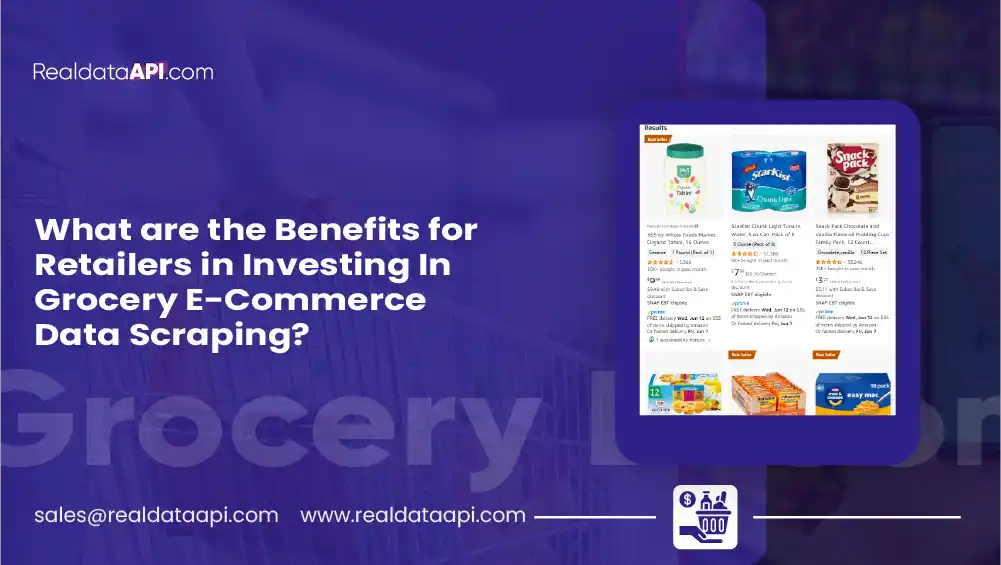
Introduction
In today’s fast-paced digital era, the grocery industry is evolving rapidly. The rise of e-commerce has transformed traditional shopping methods, pushing retailers to adapt to the new norm of online grocery shopping. One of the most potent tools at the disposal of modern retailers is grocery e-commerce data scraping. This technology enables retailers to gather, analyze, and utilize vast amounts of data from various online sources, driving strategic decision-making and enhancing overall business performance. In this detailed blog, we’ll explore the myriad benefits of investing in grocery e-commerce data scraping.
Understanding Grocery E-Commerce Data Scraping
What is Grocery E-Commerce Data Scraping?
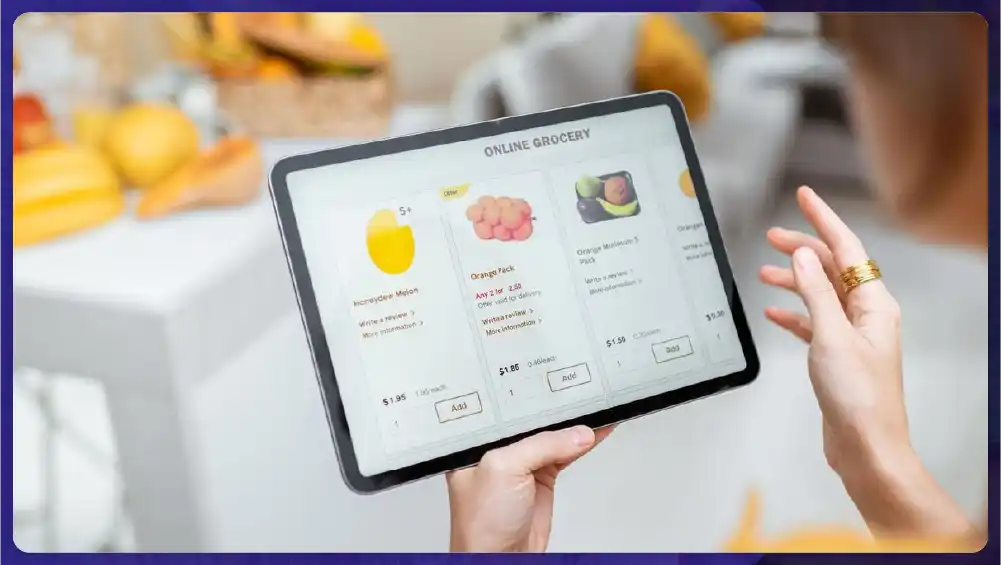
Grocery e-commerce data scraping involves using automated tools known as grocery e-commerce data scrapers to extract large volumes of data from online grocery platforms. This data can include product details, prices, customer reviews, stock levels, and more. Retailers can then use this information to gain insights into market trends, customer behavior, and competitor strategies.
How Does Grocery E-Commerce Data Scraping Work?
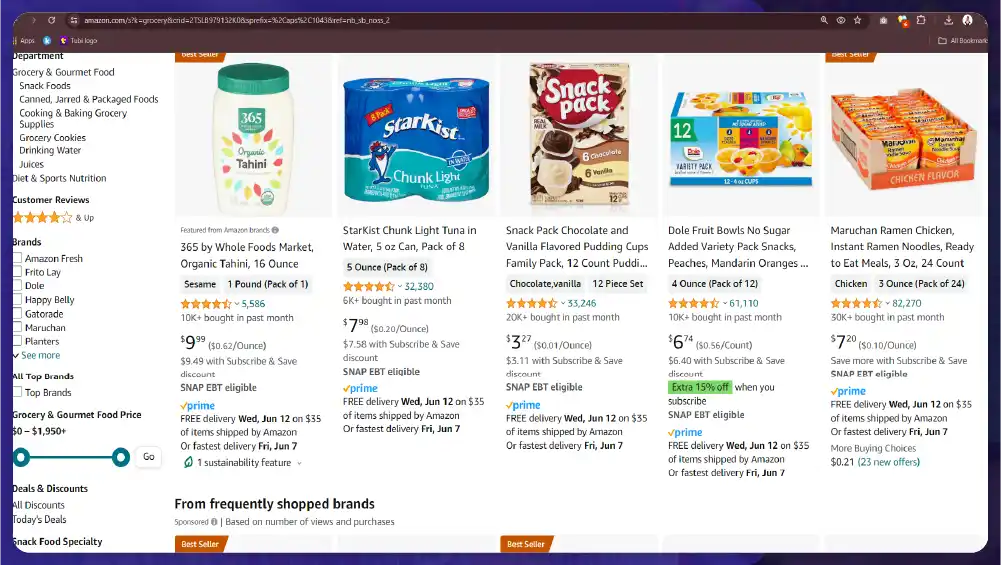
The process typically involves the following steps:
- Target Identification: Identify the websites or online platforms from which to scrape grocery e-commerce data.
- Data Extraction: Use web scraping services or instant data scrapers to collect the necessary data.
- Data Cleaning: Remove any irrelevant or duplicate data to ensure accuracy.
- Data Analysis: Analyze the extracted data to gain actionable insights.
- Implementation: Use these insights to inform business decisions and strategies.
Benefits of Grocery E-Commerce Data Scraping
Enhanced Market Research

Grocery e-commerce data scraping is a powerful tool for market research. By extracting grocery e-commerce data, retailers can gain comprehensive insights into market trends, customer preferences, and emerging demands. This information is invaluable for developing products that meet current market needs and staying ahead of competitors.
For instance, if data scraping reveals a growing trend in organic produce, retailers can adjust their inventory to include more organic options, catering to consumer demand and potentially boosting sales.
Competitive Analysis and Price Comparison
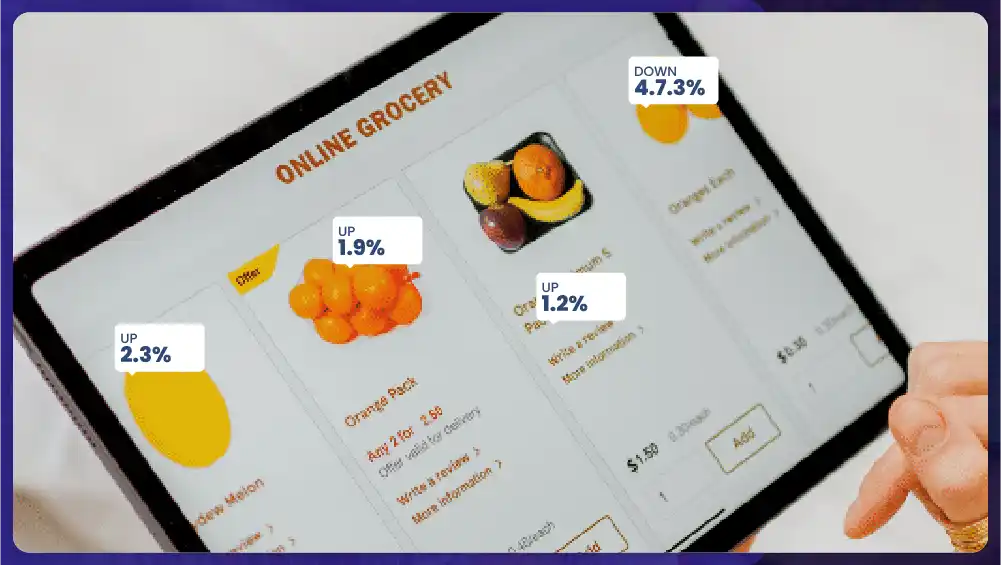
Understanding what competitors are offering and their pricing strategies is crucial for staying competitive. Grocery e-commerce data scraping allows retailers to continuously monitor competitor prices and product availability. This information can be used for effective price comparison and to adjust pricing strategies accordingly.
For example, if a competitor lowers the price of a popular item, a retailer can quickly respond by offering a similar discount or promotion, ensuring they remain competitive and attract price-sensitive customers.
Inventory Optimization
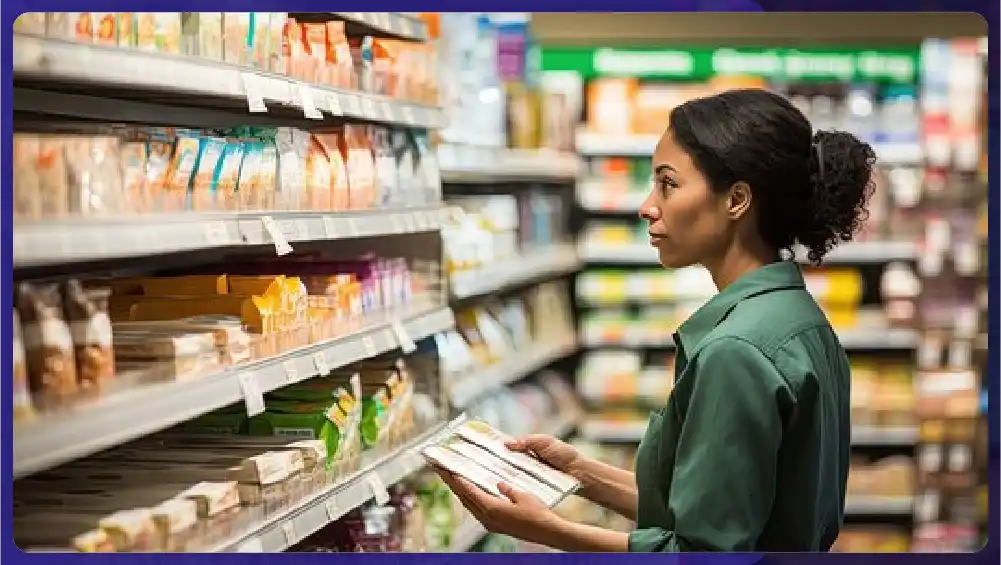
Effective inventory management is critical in the grocery industry to minimize waste and maximize sales. By using grocery e-commerce data extraction, retailers can monitor which products are in high demand and which ones are not selling as well. This allows for better stock management, reducing the risk of overstocking or understocking.
For instance, if data shows a spike in demand for a particular seasonal item, retailers can increase stock levels of that item to meet customer demand and avoid stockouts.
Personalized Marketing and Customer Insights
Personalized marketing is becoming increasingly important in the retail sector. Grocery e-commerce data collection provides insights into customer preferences, shopping habits, and purchase history. Retailers can use this data to create targeted marketing campaigns that resonate with individual customers.
For example, if data reveals that a customer frequently buys gluten-free products, the retailer can send personalized promotions and recommendations for other gluten-free items, enhancing customer satisfaction and loyalty.
Improved Customer Experience
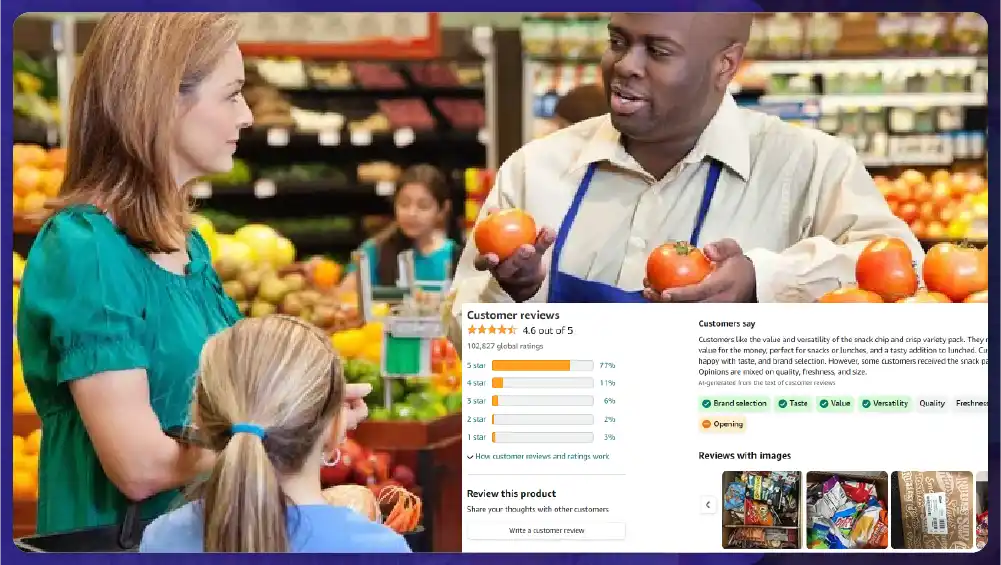
A positive customer experience is key to retaining customers and encouraging repeat business. By extracting grocery e-commerce data, retailers can identify areas for improvement in their online shopping experience. This can include optimizing website navigation, improving product descriptions, or offering better customer support.
For instance, if data shows that customers are frequently abandoning their carts due to high shipping costs, retailers can address this issue by offering free shipping or more affordable shipping options.
Demand Forecasting
Accurate demand forecasting is essential for maintaining optimal inventory levels and meeting customer demand. Grocery e-commerce data scraping provides historical sales data and trends that can be used to predict future demand. This helps retailers plan their inventory, staffing, and marketing efforts more effectively.
For example, if historical data indicates a surge in demand for certain products during specific holidays, retailers can prepare by stocking up on those items in advance.
Real-Time Data for Quick Decision Making
In the fast-paced grocery industry, timely data is crucial for making quick decisions. Instant data scrapers provide real-time data that retailers can use to make immediate adjustments to their strategies. This agility is particularly important in responding to market changes, competitor actions, and customer needs.
For instance, if a competitor launches a flash sale, real-time data scraping can alert retailers to this change, allowing them to quickly implement their own promotions to stay competitive.
Product Development and Innovation
Understanding customer preferences and market trends is vital for successful product development and innovation. Grocery e-commerce data scraping provides valuable insights into what customers are looking for, which can inform the development of new products or the improvement of existing ones.
For example, if data indicates a growing interest in plant-based products, retailers can expand their product lines to include more plant-based options, meeting customer demand and staying ahead of industry trends.
Enhancing Supplier Relationships
Maintaining strong relationships with suppliers is crucial for ensuring a steady supply of products. By using a grocery e-commerce data scraper, retailers can track the performance of different suppliers, including delivery times, product quality, and pricing. This information can be used to negotiate better terms and ensure a reliable supply chain.
For instance, if data shows that a particular supplier consistently delivers late, retailers can address the issue with the supplier or consider alternative suppliers to ensure timely product availability.
Operational Efficiency
Operational efficiency is key to reducing costs and increasing profitability. Grocery e-commerce data collection helps retailers identify inefficiencies in their operations, such as slow-moving inventory, bottlenecks in the supply chain, or areas with high operational costs.
For example, by analyzing data on delivery times and customer feedback, retailers can streamline their logistics processes to ensure faster and more reliable deliveries, enhancing customer satisfaction and reducing operational costs.
Enhanced Product Listings
Accurate and detailed product listings are crucial for attracting customers and driving sales. By extracting grocery e-commerce data, retailers can ensure their product listings are up-to-date and comprehensive, including detailed descriptions, high-quality images, and accurate pricing information.
For instance, if data scraping reveals discrepancies in product information across different platforms, retailers can correct these errors to provide a consistent and reliable shopping experience.
Regulatory Compliance
Compliance with industry regulations and standards is essential for avoiding legal issues and maintaining customer trust. Grocery e-commerce data extraction helps retailers monitor compliance with labeling requirements, ingredient disclosures, and other regulatory standards.
For example, by regularly scraping data from their own product listings, retailers can ensure that all required information, such as nutritional labels and allergen warnings, is accurately displayed, meeting regulatory requirements and protecting customer health.
Conclusion
Investing in grocery e-commerce data scraping offers a multitude of benefits for retailers, from enhancing market research and competitive analysis to improving inventory management and customer experience. By leveraging advanced web scraping services and instant data scrapers, retailers can gain valuable insights that drive strategic decision-making and foster business growth.
In a competitive and ever-evolving market, staying ahead requires access to accurate and timely data. Grocery e-commerce data collection and extraction provide the tools necessary to understand market trends, customer behavior, and competitor strategies. With these insights, retailers can optimize their operations, enhance customer satisfaction, and achieve long-term success.
Ready to harness the power to extract grocery e-commerce data? Contact Real Data API today to learn how our cutting-edge data scraping solutions can help your business thrive in the digital age!














